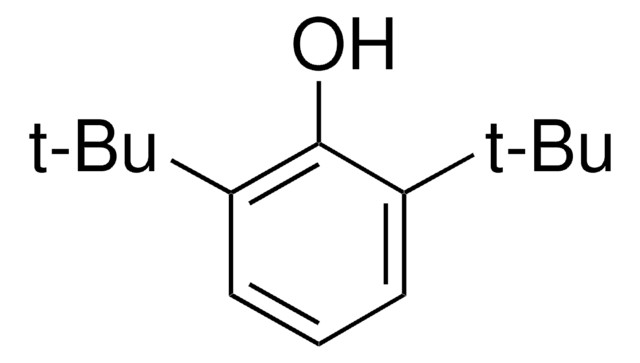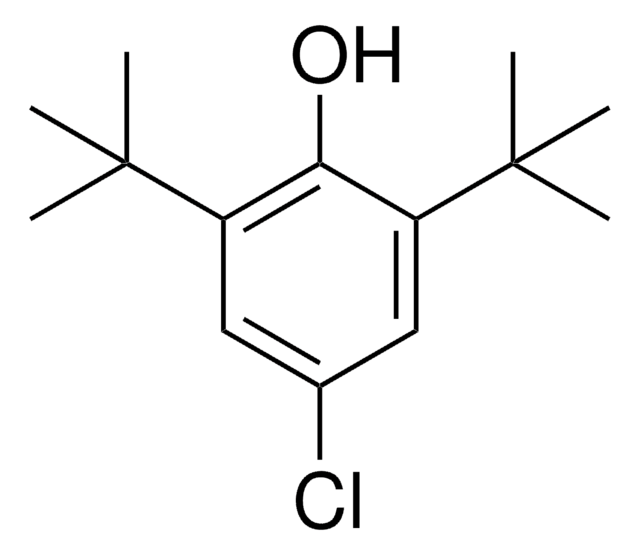394378
4-Bromo-2,6-di-tert-butylphenol
98%
Sinónimos:
2,6-Di-tert-butyl-4-bromophenol, 4-Bromo-2,6-bis(1,1-dimethylethyl)phenol, 4-Hydroxy-3,5-di(tert-butyl)bromobenzene
About This Item
Productos recomendados
Ensayo
98%
Formulario
solid
mp
78-83 °C (dec.) (lit.)
grupo funcional
bromo
cadena SMILES
CC(C)(C)c1cc(Br)cc(c1O)C(C)(C)C
InChI
1S/C14H21BrO/c1-13(2,3)10-7-9(15)8-11(12(10)16)14(4,5)6/h7-8,16H,1-6H3
Clave InChI
SSQQUEKFNSJLKX-UHFFFAOYSA-N
¿Está buscando productos similares? Visita Guía de comparación de productos
Descripción general
Aplicación
- As a terminating comonomer phenol in the phase transfer catalyzed (PTC) polymerization of 4-bromo-2,6-dimethylphenol.[1]
- Synthesis of 1,1-[1,10-decanediylbis(oxy)]bis[(2,6-ditertbutyl-4-bromo)benzene], a monomer, which forms poly(p-phenylenevinylene) derivatives by reaction with 1,10-dibromodecane.[4]
- As a reactant in the synthesis of 2,6-di-tert-butyl-phenolnorbornene (NArOH), a norbornene comonomer bearing an antioxidant hindered phenol.[5]
- As a catalyst with methyl aluminium to form methylaluminum bis(4-bromo-2,6-di-tert-butylphenoxide) (MABR) which may be utilized for the transformation of various epoxides to carbonyl compounds.[6][7]
Palabra de señalización
Warning
Frases de peligro
Consejos de prudencia
Clasificaciones de peligro
Eye Irrit. 2 - Skin Irrit. 2 - STOT SE 3
Órganos de actuación
Respiratory system
Código de clase de almacenamiento
11 - Combustible Solids
Clase de riesgo para el agua (WGK)
WGK 3
Punto de inflamabilidad (°F)
Not applicable
Punto de inflamabilidad (°C)
Not applicable
Equipo de protección personal
dust mask type N95 (US), Eyeshields, Gloves
Elija entre una de las versiones más recientes:
Certificados de análisis (COA)
¿No ve la versión correcta?
Si necesita una versión concreta, puede buscar un certificado específico por el número de lote.
¿Ya tiene este producto?
Encuentre la documentación para los productos que ha comprado recientemente en la Biblioteca de documentos.
Los clientes también vieron
Filtros activos
Nuestro equipo de científicos tiene experiencia en todas las áreas de investigación: Ciencias de la vida, Ciencia de los materiales, Síntesis química, Cromatografía, Analítica y muchas otras.
Póngase en contacto con el Servicio técnico











